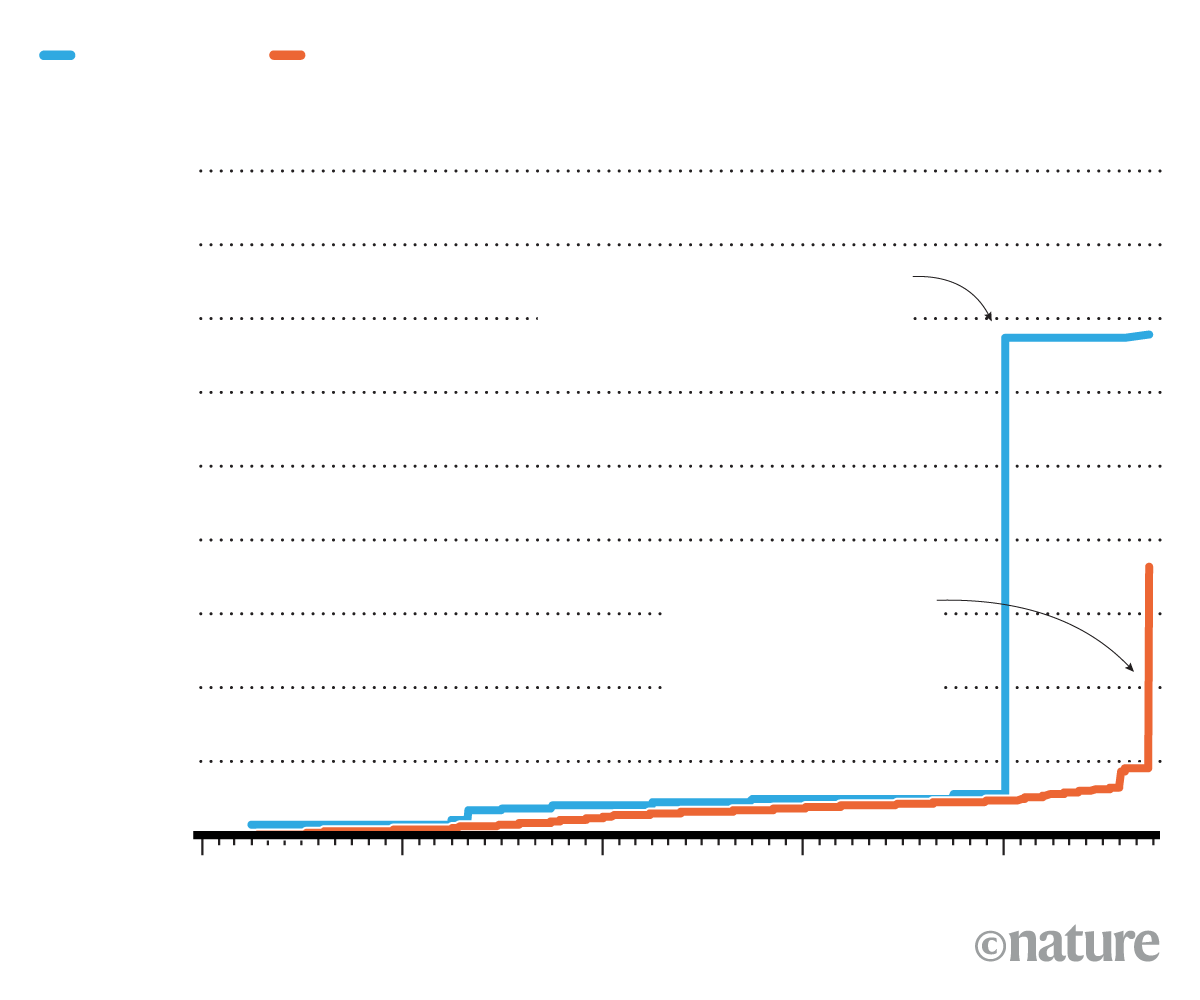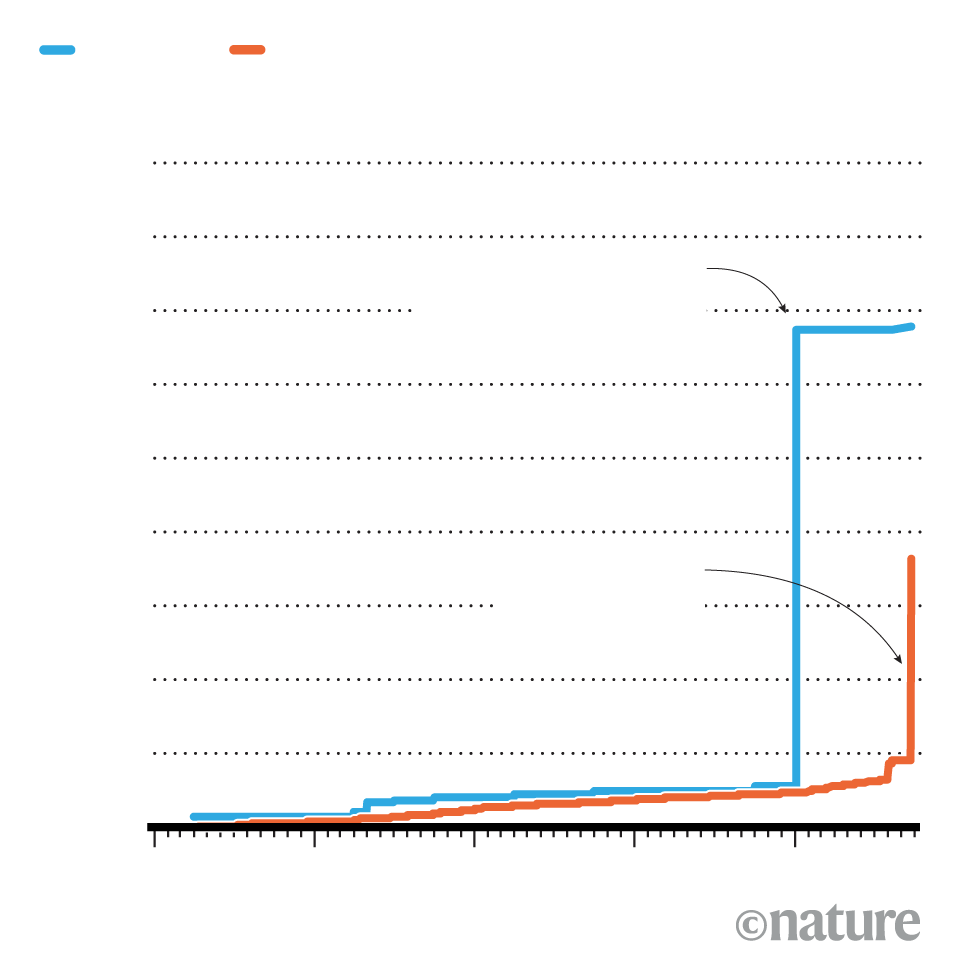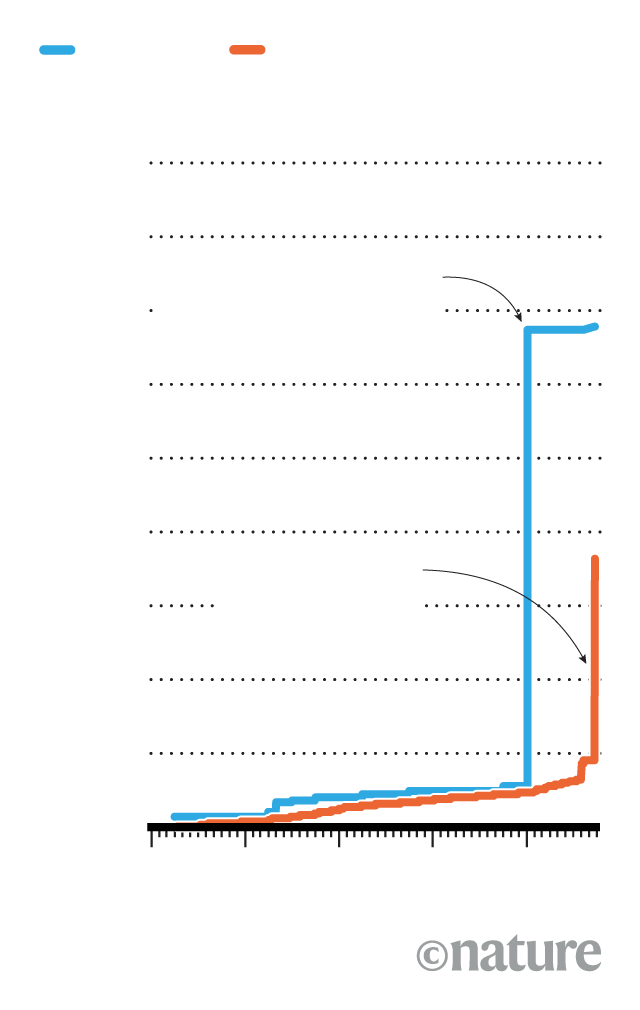Starting up in science
Part 3: Crisis point
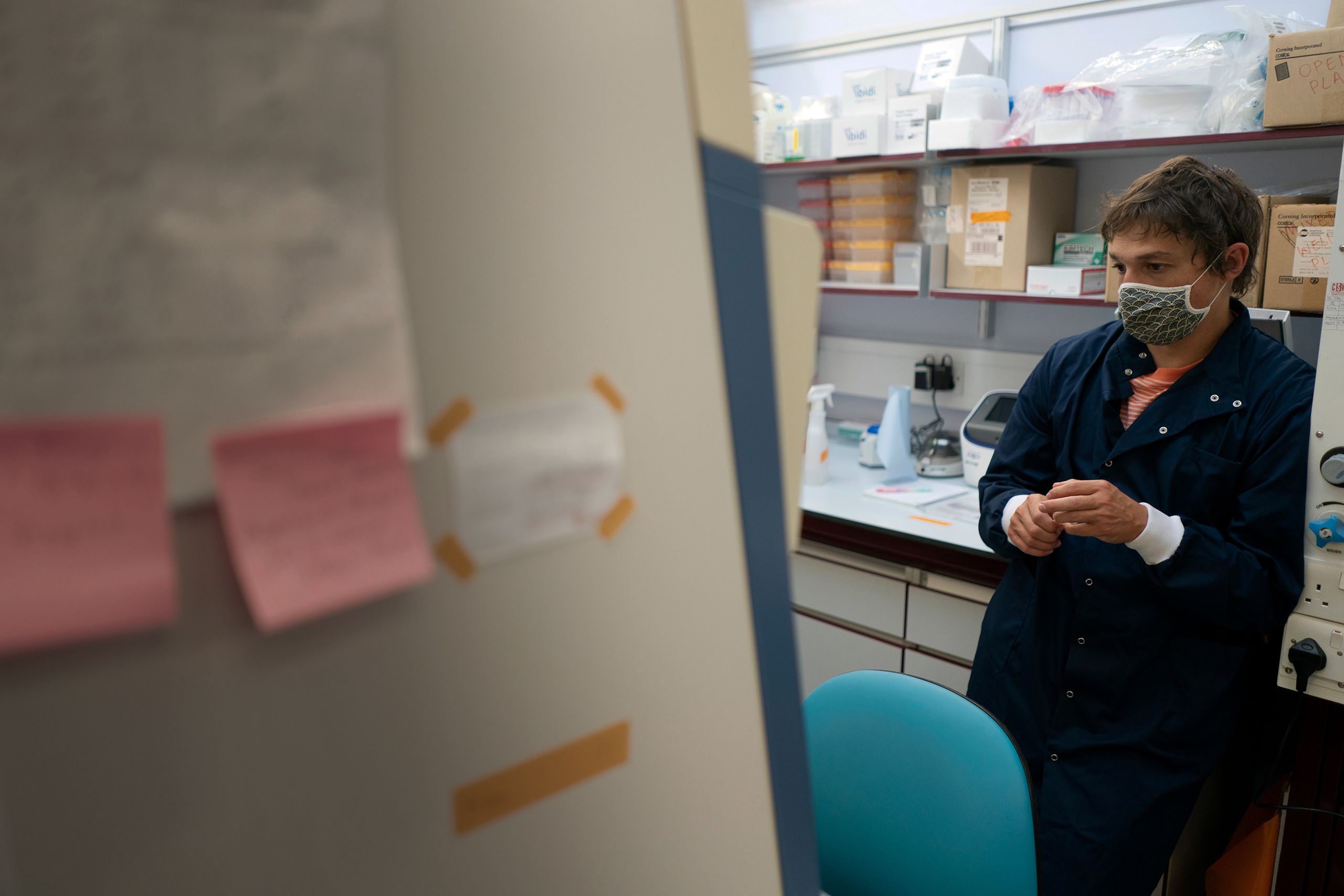
Alison Twelvetrees and Daniel Bose are newly minted lab heads at the University of Sheffield, UK, and they need to win grants to keep their operations going.
The financial pressure is off for Dan, who won a large fellowship at the end of 2018. But, by 2019, Ali still doesn’t have the money to support her lab’s future.
In 2020, just as both are finding their feet, there’s a global pandemic. And then, something even more world-shattering happens to the family.
10. Protein universe

In a small, dark room inside the university’s biology building, Dan carefully transfers a sample onto a metal grid that will go into a large transmission electron microscope. The microscope takes up half the space in the basement room.
“I always find this the most exciting step,” he says. “When you’ve spent a long time with a protein, you feel how it behaves in a test tube and how it interacts. To stick it under a microscope and see it for the first time is always quite a nice experience.”
It’s September 2019, and Dan is finally starting the experiment he’s long dreamt of doing. For most of the past decade, he has been studying a protein known as CBP, which controls how easily a gene can be switched on. Researchers have glimpsed some of CBP’s structure, but they haven’t worked out all of it — and they don’t know how CBP interacts with an ‘enhancer RNA’ that Dan’s lab is studying.
Now, with a break in his teaching schedule, Dan will try to decipher the RNA–CBP structure.
The microscope hums faintly as, inside it, electrons rain down on the sample. For Dan, it’s a nostalgic sound. “I did this for years, before my first postdoc. I used to be regularly falling asleep in a dark room with a hum in the background.”
The electron beam shoots through the protein sample, and hits a fluorescent screen below, forming a shadow-like image. Dan patiently moves the beam around the grid, hoping to spot a glimpse of a RNA–CBP complex; the molecules are just 30 nanometres across. He’s turned up the zoom to 50,000× magnification. “You can spend hours flying around in this different protein universe,” he says.
Eventually, he spots some promising-looking blobs. They seem to be bigger than CBP on its own, suggesting that he has got CBP and RNA binding together. “This is the first time I’ve seen it. That’s pretty cool,” he says.

Blobs in this electron microscope view show a complex of the protein CBP bound to RNA.
Blobs in this electron microscope view show a complex of the protein CBP bound to RNA.
It’s just the start of what will be a long series of imaging experiments to construct the 3D details of the complex that Dan is using his £65,000 FPLC (fast protein liquid chromatography) machine to purify; Dan aims to recruit a postdoctoral student to do most of the work next year. That will involve preparing more samples for use on this machine and the larger, more sophisticated cryo-electron microscope (cryo-EM) next door. Not one to show his feelings readily, Dan allows himself a smile. It’s hard to hear his soft voice over the hum of the machine. “It feels like quite a big deal. This is a sample we can look at, and to build up the structure side of the lab is pretty exciting. It’s a nice victory.”
Hear Ali and Dan's story in our 4-part podcast miniseries. Via Apple Podcasts | Via Google Podcasts | Via Spotify
11. Pack mentality

January 2020 ushers in a wave of productivity and optimism. Both labs are teeming with workers; at the work Christmas dinner a couple of weeks earlier, when they collected their own groups together with that of fellow biologist, Emma Thomson, they found themselves catering for more than 20 people, where 2 years ago there were 5.
Dan’s students go together to the pub or to the cinema, bring in snacks for their colleagues and share memes on the messaging app Slack. Dan has been concentrating on kickstarting their projects, and they are becoming increasingly autonomous. “Things move without me in the lab,” he says. The result is an atmosphere in which the students feel relaxed, and free to bounce ideas off one another, says master’s student Luc Costello-Heaven. “I enjoy coming in and seeing everyone,” he says.

People who pass through Dan Bose’s lab measure their heights on a whiteboard.
People who pass through Dan Bose’s lab measure their heights on a whiteboard.
The camaraderie helps them endure the pain of inevitable failed experiments. “If you’re having a bad day, if your experiment is not working, everyone’s always like, ‘It’s fine. What’s the worst that can happen? We just do it again,’” says Katie Gelder, a PhD student who started in the lab in October 2019. PhD student Petra Celadova is still working towards identifying key regions of the enhancer RNAs in leukaemia cells, but her cell lines are misbehaving and she’s spent months trying to sort out what is wrong. She’s still hoping to salvage the lines after investing so much time in them.
Petra has enjoyed the work, and her role as mentor to the crew of students now crowding the lab. But as she heads into the last year or so of her PhD, she has already decided against setting up a lab of her own some day. Dan’s position seems like several jobs rolled into one. “You’re supposed to be a lecturer, you’re supposed to be leading a lab, you’re supposed to be doing research to collect data for your grants,” she says. “And you should be doing all of this full time, but obviously you can’t.”
Timelapse video of Dan Bose, Katie Gelder and Petra Celadova working in the lab. This video has no sound.
Timelapse video of Dan Bose, Katie Gelder and Petra Celadova working in the lab. This video has no sound.
In the last months of 2019, Ali managed to tick a few big goals off her list. She resubmitted her application, and she finally published a paper she refers to as the ‘albatross’. It presented the last tranche of data from her postdoctoral stint, which describe two proteins that team up to help neuronal motors bind to their cargo (A. E. Twelvetrees et al. J. Cell Sci. 132, jcs215822; 2019). And in her lab, work on the kinesin motor proteins and their different shapes is proceeding apace after a difficult few months in which the samples weren’t behaving.
Just as in Dan’s lab, Ali’s group is close-knit.
“My lot are crazy busy today,” Ali says, when we visit her and Dan in Sheffield at the end of January. “There’s a definite pack mentality.”
Dan chips in. “It’s very pronounced, you’ve obviously built a cohesive team.”
“In a really nice way,” says Ali.
“Just mildly aggressive,” Dan replies. His own group is not so pack-like. They’re collegial, he says, but “they don’t have the same air of intimidation. They might go for lunch together.”
“I’m kind of encouraging it, to a certain extent,” Ali says. “Their confidence is going to feed off each other.”
Ali’s own confidence got a boost in mid-January when she heard that she’d secured a second interview for the Sir Henry Dale Fellowship. But her self-assurance was already quietly growing, and she says that was reflected in her latest application. “Your science comes from your personal creativity. And if you’re feeling not very good about yourself, it’s difficult to stop that leaching into how you perceive what you’re capable of,” she says.
The first time around, “I kept that grant within what I was capable of, and they wanted more from me”. She says she was afraid to ask such fundamental, unaddressed questions about neuronal cell biology as she has in her latest plan, and to prove that she was the scientist who could answer them. “And now I’m like, yeah, fine. You either think ‘I can do it now’ or you don’t, basically, but I’m pretty confident I can do it.”
12. “Such a stereotypical scientist’s nightmare”

The interview is in London on a torrential day in early March 2020. That morning, Ali had woken at 5.30 a.m. from a nightmare in which she had left the lab’s −80 °C freezer open. She is disappointed that her sleeping brain wasn’t more inventive. “Such a stereotypical scientist’s nightmare to have. Such a cliché.”
She has memorized her five-minute talk, practised it over and over again and had three mock interviews with colleagues. Her lab members gave her a good-luck card and she is wearing a locket in which there are some strands of her daughter Ada’s hair and some of Dan’s.
She has left her lab in a state of flux. The coronavirus SARS-CoV-2 has established itself in the United Kingdom; COVID-19 cases are ticking up steadily. The university hasn’t yet decided on a plan of action, Ali says, but she and Dan are thinking ahead. “Potentially, they’re going to shut the university down, which is what they’ve done in Italy.”
For now, she focuses on the task at hand. What’s the first line of her presentation? “My lab studies slow axonal transport,” she says without hesitation. “Hopefully, once I go in, it’ll all just come out.”
And mostly it does. After the interview, she is giddy with relief and pretty satisfied with how it went. “I didn’t say anything that I regret,” she says, her sentence dissolving into high-pitched laughter.
Ali barely has time to reflect on how her interview went before global events intrude. COVID-19 cases continue to rise, and Ali starts talking to her students about the possibility of shutting the lab. “You could see what was happening in Europe,” she says. Finally, on 17 March, the day after UK Prime Minister Boris Johnson made a televised address to advise people to stop ‘non-essential contact’, she shut the lab down. That day, her department e-mailed the same advice. (It would be another week before lockdown began officially.)
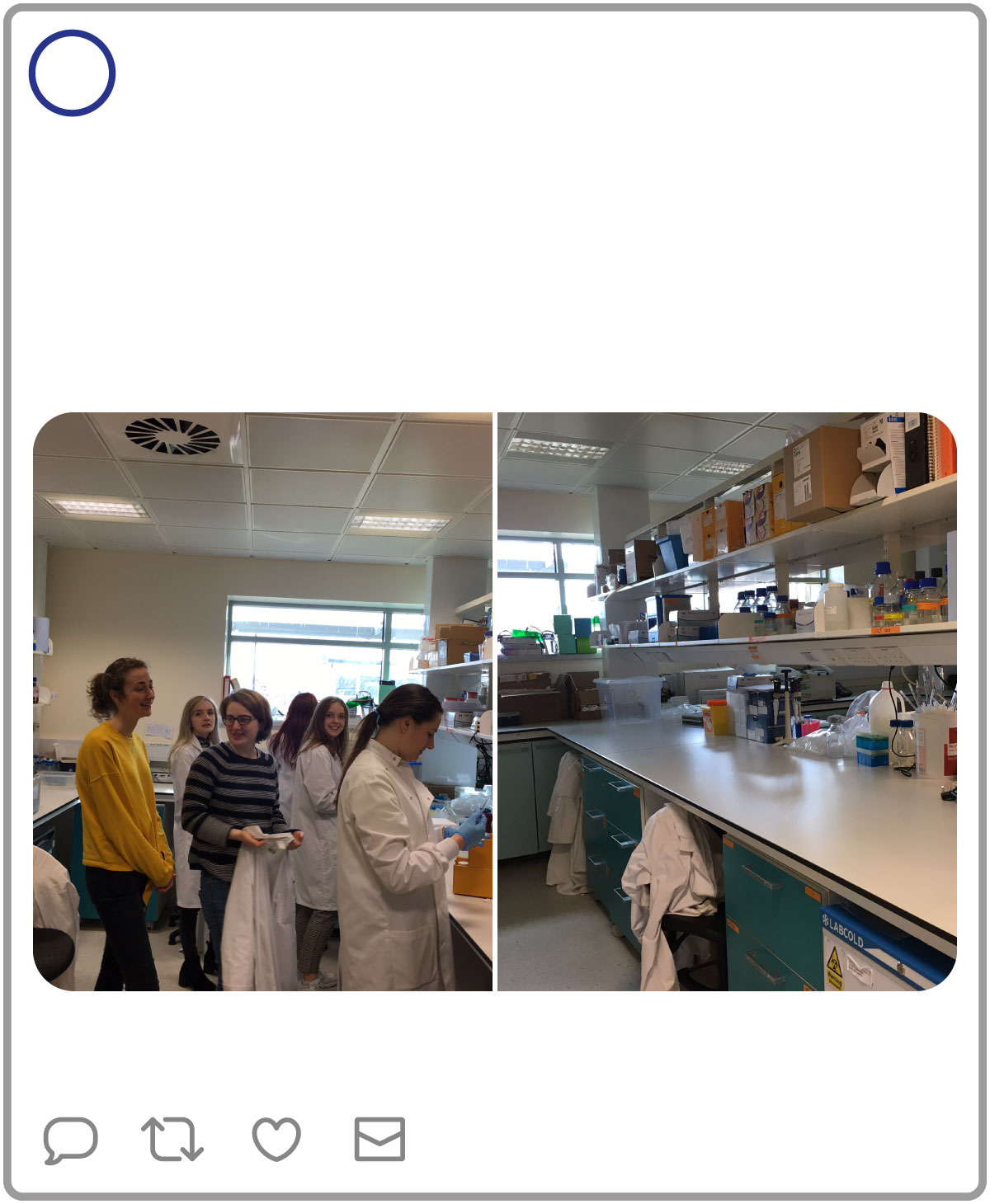
Twelvetrees Lab
@TwelvetreesLab
Before and after. This is us just over a week ago and our bench today. Stay safe everyone x
1:56 PM · Mar 17, 2020
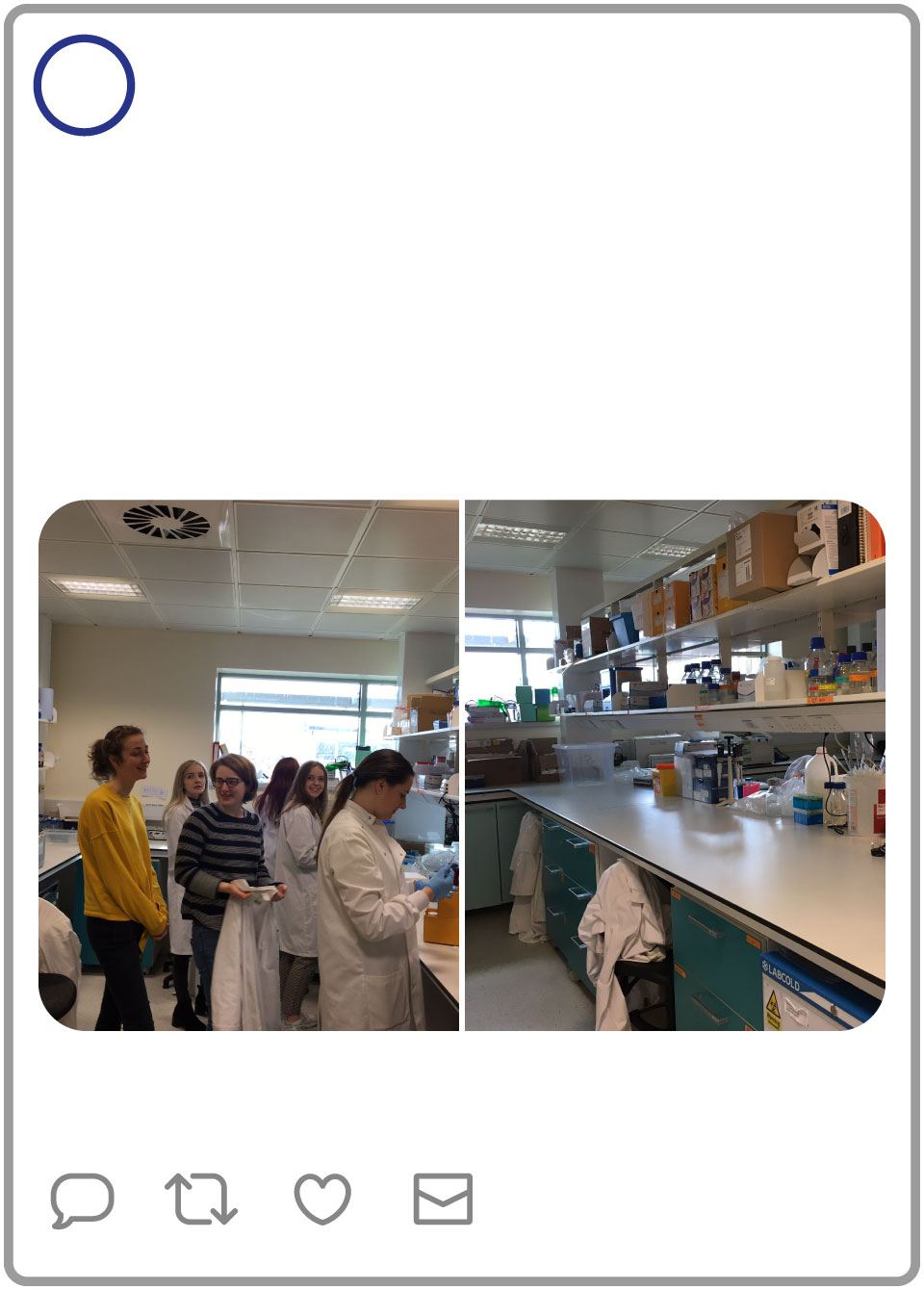
Twelvetrees Lab
@TwelvetreesLab
Before and after. This is us just over a week ago and our bench today. Stay safe everyone x
1:56 PM · Mar 17, 2020
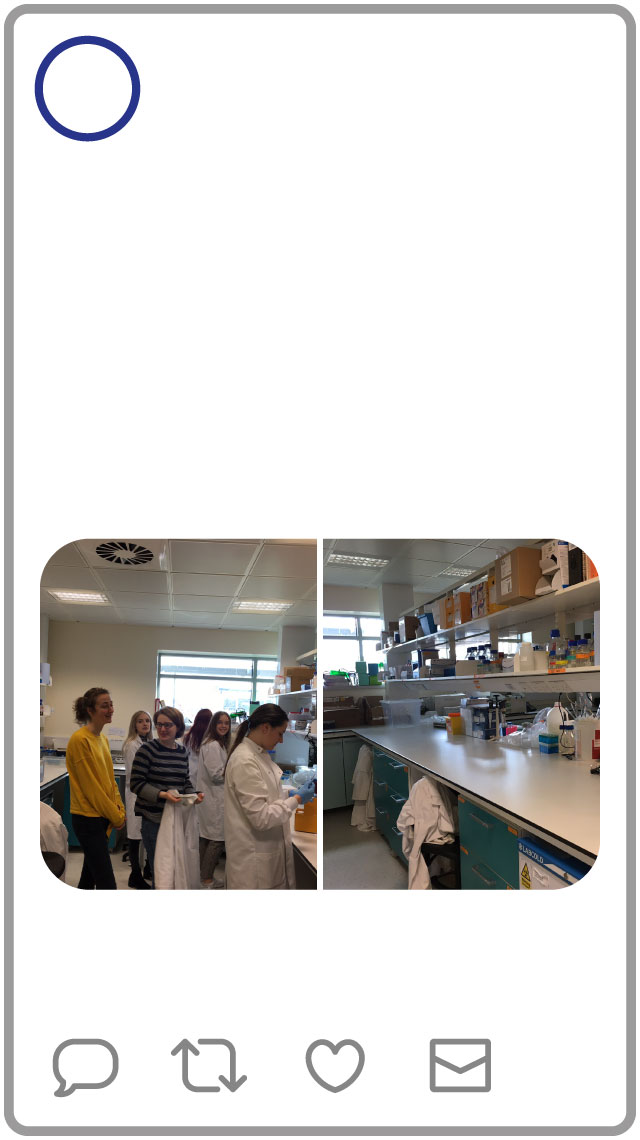
Twelvetrees Lab
@TwelvetreesLab
Before and after. This is us just over a week ago and our bench today. Stay safe everyone x
1:56 PM · Mar 17, 2020
Before and after: Ali’s lab group tweets about the shutdown on 17 March 2020.
“I don’t think anybody has begun to grasp how massive an effect this is going to have,” she says on a video call the next day.
It’s frustrating for Ali to see scientists from large lab groups saying on Twitter that they’ll make the best of the enforced break by writing up papers. “If you are sitting on papers like that, you have too much research money,” she says, viewing it from the perspective of her own group, in which two PhD students are only half a year into their projects. “It’s going to have such a damaging effect.”
Ali starts video calls with her team. “I want to make sure they’re coping OK.” And she’s angry that, it seems, universities still expect researchers to be as productive as ever. “This concept that we can continue to work from home while caring for sick people or looking after children. What fantasy land do people live in who can imagine we can do that?”
That day, Dan goes into work to give his lecture to an empty theatre — filmed for the students. “My jokes usually go flat anyway, so no difference there,” he says. The lockdown is necessary, but to both Dan and Ali, it means unknown territory for their science, their lab group and their home lives. Ada has had only six months at school — and she knows it’s going to close soon. “She’s got her red boots on today to keep cheerful,” Dan says.
In the afternoon of 25 March, Ali is making a sandwich for Ada when she checks her e-mail on her phone — and sees the grant decision has arrived. The subject line is the same as in her rejection e-mail. But when she opens up the message, the content is different: “Dear Dr. Twelvetrees. I am pleased to confirm that your application was successful.” She’s won £1.26 million — a grant that saves the lab.
“This is everything I’ve worked for,” she tells us after a raucous call with her lab group. “We can do all of the things that we’re excited about for five years. That’s the most certainty you ever get in a scientific career. It’s like winning the science lottery.”
“It’s not just the science. It’s the security that it brings as well — it’s so precious. To have me and Dan both have that now. We’ve never had that before.”
13. How to run a lab during a pandemic

Two months into England’s first lockdown and with schools closed, Ali and Dan have forged a routine: one spends the morning with Ada, the other the afternoon. With Ada they work on phonics, draw birds and grow crystals. At work, they are coping with an endless stream of online meetings, while trying to ensure their students continue to progress — and stay in good mental health. Dan is also teaching, grading papers and holding virtual office hours for undergraduates.
It’s impossible to do it all well, says Ali. She struggles to focus with Ada underfoot, even when Dan is on teaching duty. “Her voice, it just shuts my brain down completely,” she says.
Both have tried to shift their lab members on to work that can be done at home. Ali ticks through her students’ projects on a call: Evie Smith has been developing an automated data-analysis pipeline; Ashleigh Davey and Emma Turner are doing database searches … Ali trails off. “Ada, could you just be quiet for a minute?” she says calmly. Ashleigh and Emma are searching databases to gather data to back up their hypotheses, so that they can return to the lab focused and ready to push their projects forward. Nicola Carruthers, one of Dan’s students, has taken a leave of absence to volunteer in a coronavirus testing lab.
“They’re so resilient,” Ali says of her team. But each student has a strict window of time to complete their degree, and Ali knows that the uncertainty about how the pandemic will affect their education is adding to their lockdown stress. Students in both their labs are worried about being unproductive. For Dan and Ali, seeing other scientists brag on social media about attending online conferences and writing grants is frustrating when their major goal is to look after Ada and keep their students afloat remotely.
But there has been good news. Dan has passed his probation and switched from a fixed-term to a more permanent contract with the university. Although the criteria for promotion technically included publications, which Dan has not yet had, he was able to demonstrate that he had made progress towards publishing, and had met the other two criteria of teaching and bringing in funding.
Ali still bristles at mention of the publishing requirement. “Three years is not enough,” she says. “I think if you’re, you know, a theoretical physicist, right, you don’t have to set up a lab or work at the pace at which things grow.”
In Ali’s case, the criteria are not as clear and the process is not as formal, but she has learnt that her department has shifted her to an open-ended contract and included her in its financial projections, suggesting that her lab will be able to stay.

Dan with PhD student Nicola Carruthers.
Dan with PhD student Nicola Carruthers.
When the labs reopen in the summer, Dan and Ali’s tidy schedule is demolished. Their household routine is continually shifting as their work conditions change. Dan’s lab is in a classical university building, with long corridors and closed doors; Ali’s is in an open-plan building with shared spaces and a large atrium — their return to the lab is markedly different. Dan is able to bring back his students, and they work almost normally, minding the new social distancing and safety protocols.
For Ali, however, lab work is a logistical nightmare. The students are assigned to shifts, some working in the morning, some in the afternoon. This means that an experiment started in the morning must now be handed over to someone on the afternoon shift to finish. It is a level of collaboration, planning and restricted movement that leaves no margin for error, and progress has slowed as a result.
Some experiments remain off-limits: Ali’s lab can no longer access the shared microscopes in other buildings on campus. And perhaps hardest of all is the physical separation, which makes it difficult to recapture the collaborative atmosphere that Ali had so cherished.

Ali’s students wrote jokes and messages on a freezer door as they worked shifts in the lab.
Ali’s students wrote jokes and messages on a freezer door as they worked shifts in the lab.
“At the start of the year, I felt like we’d finally turned a corner and started to build momentum,” she says. “People were motivated, experiments were working. There was an energy.”
Ali thinks back to her pre-pandemic lab and struggles to hold back tears. “Mostly I’m crying because I just miss them. For that brief window it was really nice to work with them and support them and see everything coming together.”
But she is still moving forwards. At the end of October, Ali sends e-mails to start the release of her grant money, allowing her and the team to begin planning purchases. They buy a couple of small pieces of bench-top equipment to make lab life easier and save them having to move between rooms.
Lockdown has disrupted Dan’s plan to recruit a postdoc to run the cryo-EM prong of his work, but in October, he finally puts out a job advert. It’s a “big deal” to start this work, to be able to look at the 3D structure of the RNA–CBP complex and see how it is organized and how it behaves. The rest of the lab has weathered the storm relatively well — Dan keeps on top of projects through Slack and a morning video meet-up, and the students support each other when he isn’t in the lab. He is delighted that they decided on their own to rearrange and organize the lab fridge, even if some of his old stuff got thrown out.
The lab seems to have changed gear. In March and December, Petra and Dan’s names appear on papers for work led by other researchers to which they contributed some data and experiments. A new PhD student has just joined. And Petra — his first-ever PhD student — is starting to think about writing up her project and could soon be moving on.
14. “It’ll be fine. Eventually.”
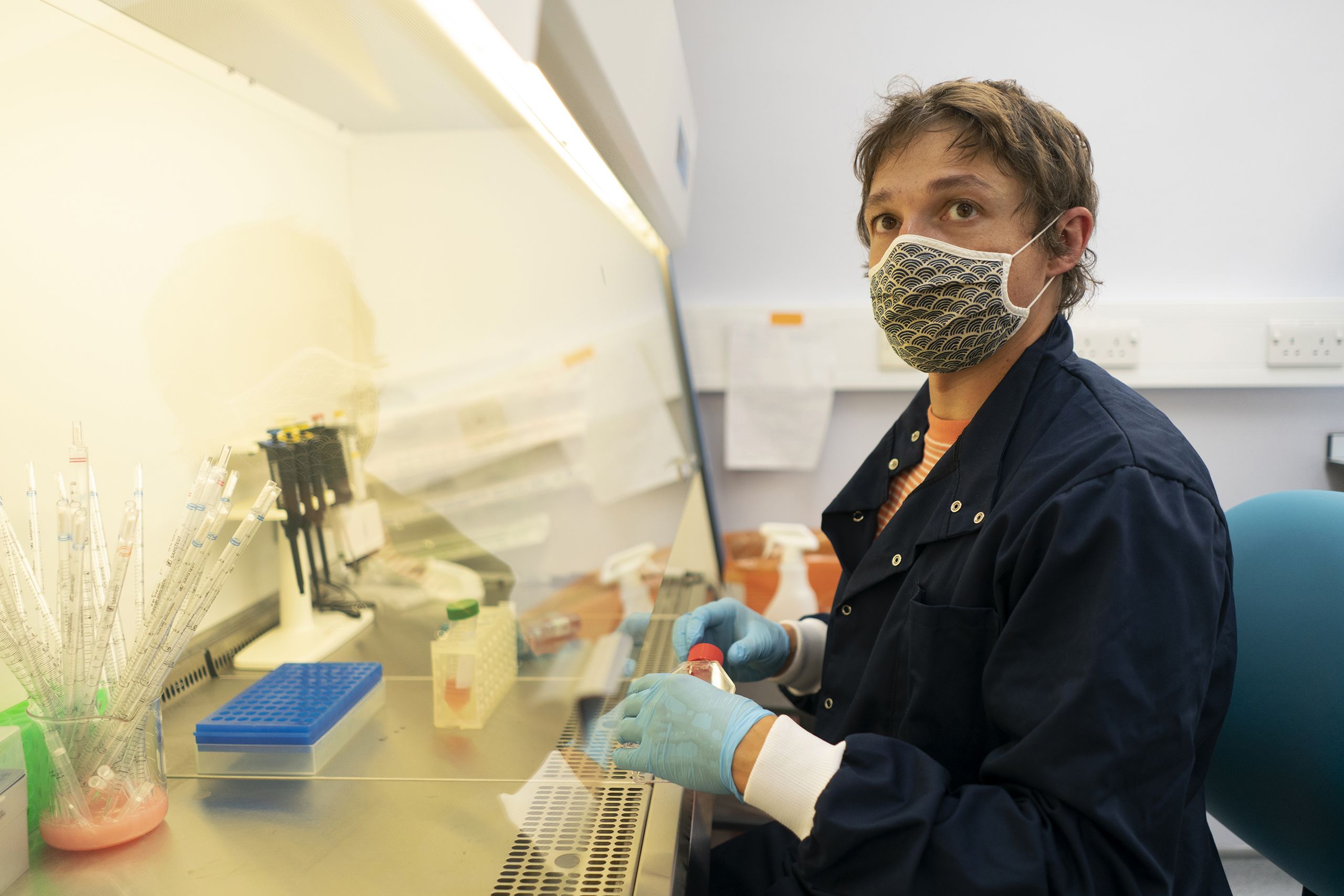
On 3 December 2020, Dan is wrapping up work when Ali texts him: “Ugh miserable weather. Are you late home again?” Dan replies that he plans to leave around 6 p.m.. But he never shows up.
What happened that evening is still a bit fuzzy, even now, so many months later. Dan was cycling home along his usual route. But he either fell off his bike or dismounted as he passed a children’s hospital. A team of doctors walking out of the hospital found him having a seizure and diagnosed him on the spot: a brain haemorrhage.
An ambulance arrived quickly and took Dan to the university hospital, where doctors placed him in a coma. “They thought he wasn’t going to make it,” says Ali. “His condition going into the hospital was so bad, and that’s correlated with how well you recover.”
Because of pandemic restrictions on hospital visits, Ali was allowed to see Dan for only a short visit before he was transferred to the neurology department. “My department,” Ali says with a sharp laugh. “But I wasn’t allowed to cross the threshold into the ward.”
Dan was in a coma for 24 hours. After that, he gradually spent more and more time awake each day. Ada sent him lots of messages and pictures, practising her handwriting. Dan chatted with Ali by phone, but only after she had ensured he couldn’t use most of the apps.
“She disabled everything except FaceTime,” says Dan. “So that I couldn’t check work e-mails.” While Dan made optimistic plans for his return to work, Ali was haunted by the statistics: only about half of people with Dan’s condition survive long enough to leave hospital, and even then they face varying degrees of disability.
But Dan was one of the lucky ones: he went home on 22 December. His haemorrhage had been caused by a weak blood vessel in his brain, called an aneurysm, which had burst. Dan had had a headache for weeks before the rupture, but had dismissed it as being the result of too much coffee, or stress, or screen time.
His medical team scanned his brain to find out if he was at risk of a repeat haemorrhage, and found nothing.
“In the doctor’s words: my brain is ‘pristine’,” he says with a mischievous smile.
“Dan brings that one out on a regular basis,” says Ali.
After the holidays, another COVID-19 lockdown closed the schools, so Ada was at home, too, wanting to check in on Dan when he was trying to rest. “She would tiptoe up,” says Ali. “But she wasn’t very quiet.”
While Dan recovered, Ali and Emma worked to keep his job responsibilities at bay. Colleagues in the department took over his teaching, and Emma helped to supervise his team’s day-to-day work. Ali kept a close eye on Dan to make sure he gave himself the time he needed to recover.
“He was planning all of these things, and I was like, ‘you know you can’t walk?’,” says Ali. “He would say, ‘It’ll be fine. Eventually.’”
“Medication is a powerful thing,” says Dan.
Gradually, Dan was able to do more and more. He checked in on his students over video calls, and selected a postdoc from applications he had received just before his accident. He interviewed candidates in February, and selected a new recruit to start in May.

Ali unloads new lab equipment.
Ali unloads new lab equipment.
As Dan recovered, Ali was able to turn back to her own work, pushing her own students’ projects forwards and making some changes to their shift patterns to enable a bit more overlap and make everyone happier.
By the summer, she had begun making plans to spend her grant money: she had finally found a place in her institute for the expensive fluorescence microscope — an act of diplomacy more than design — and begun the “miles of paperwork” its purchase would require (see ‘Finally funded’). The total cost would ultimately come to £272,906. “Sort of weird to think it costs the same as a house,” Ali says.
Meanwhile, using the fluorescence resonance energy transfer (FRET) microscope, her team had made some intriguing discoveries about their motor proteins: they seem to exist in more than just ‘on’ and ‘off’ states, which could have implications for how they do their jobs carrying cargo in neurons. “Still planning that slightly elusive, but hopefully closer, publication,” she says.
Finally funded
With her grant secured, Ali can at last order the microscope of her dreams. (Chart excludes staff salaries).
Funding remained a nightmare — literally. One weekend in June, Ali woke up in the middle of the night after an oppressive dream about losing her job. “Persistent career insecurity over many many years leaves anxiety scars,” she tweeted.
A few months earlier, she had asked fellow new PIs on Twitter how many times they’d thought about quitting academic science in the past year. More than one-third said they’d done so at least every week.
In June, about six months after his haemorrhage, Dan still got tired doing tasks that were routine before, and one of his feet would go numb if he forgot to do his physiotherapy. He worried about how he would deal with large crowds once the lecture theatres were open again.
But he was improving quickly, and both he and Ali were thinking about the future and the never-ending quest for research funding. “It feels like there’s this sort of balance between doing work that’s related to the fellowship and then doing work with half an eye down the road to where the next fellowship or the next bit of funding is going to come from,” Dan said.

Dan and Ada on a holiday in Durness, Scotland, where Dan grew up.
Dan and Ada on a holiday in Durness, Scotland, where Dan grew up.
It has now been more than four years since Ali and Dan arrived in Sheffield. If she could give advice to her younger self, Ali says, she would have suggested nurturing more faith in her own abilities. “I can see how little confidence I had in myself and my ideas when I started, and how paralysing that was in terms of being able to write anything that someone was going to fund,” she says.
Dan says that, at the beginning, he beat himself up about all the things he wasn’t getting done. But, in retrospect, he can see that work in his lab was progressing — just more slowly than he’d hoped. “First off — know that slow is OK,” says Dan. “I had expectations of just carrying on at postdoc speeds, and, actually, that’s not healthy. And it wasn’t possible.”
In September, the UK school year starts. Ali and Dan are searching for their routine: they alternate week by week who picks Ada up after school so that they can each count on some evenings to work late.
Dan is once again the first one in the household to wake up each morning, which Ali finds comforting. “The weirdest thing for me after the aneurysm was how much he slept,” she says.
Although he will be returning to teaching in a few weeks, Dan keeps his early mornings sacrosanct. He gets up, feeds the cats, brings a sleeping Ali some tea and sits reading a book until Ali or Ada wakes up. He tries to avoid checking e-mails.
He now tries to make sure that he has time set aside each day to think about his science, and he guards his free time much better. “It’s not normal to wake up in hospital after that and your first instinct is ‘I’ve got to get back to work because I’ve got teaching in a few weeks’,” says Dan.
Ever since his stint in the hospital, he can separate from work more easily. “I will often turn off the phone over the weekend and play with Ada for longer,” he says. “I feel much lighter now.”
Nature 597, 618-623 (2021)
doi: https://doi.org/10.1038/d41586-021-02565-9
This article is also available as a pdf version.
Authors: Kerri Smith, Heidi Ledford, Richard Van Noorden
Additional Reporting: Benjamin Thompson
Design: Lizzy Brown, Wesley Fernandes, Kelly Krause
Original photography: Chris Maddaloni for Nature
Subeditors: Anne Haggart, Anna Callender
Podcast editors: Benjamin Thompson, Kerri Smith
Editor: Richard Monastersky
Project leader: Kerri Smith
Personal photos provided by Alison Twelvetrees and Daniel Bose.
